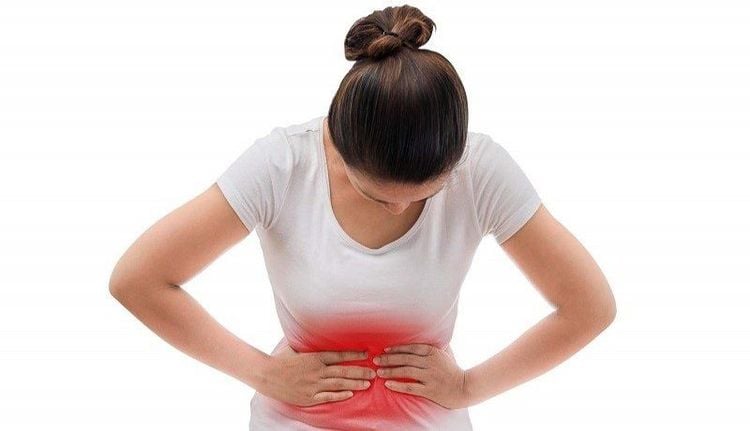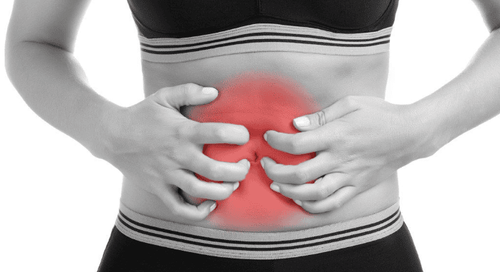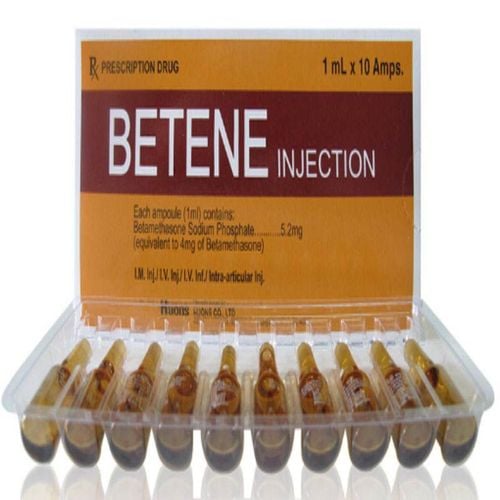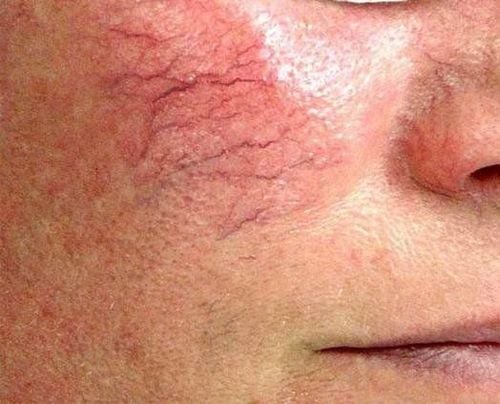This is an automatically translated article.
Ovaries with many small cysts when observed on ultrasound is one of the signs of polycystic ovary syndrome. This is a common hormonal disorder in women of reproductive age that causes women to have irregular or prolonged menstrual cycles or excess androgens in the blood.
1. Ovaries with many small cysts, signs of disease?
Polycystic ovaries or polycystic ovary syndrome is a common condition that affects the functioning of the ovaries in women.
The three main features to recognize polycystic ovary syndrome are:
Irregular periods - meaning the ovaries do not regularly ovulate in cycles An excess of androgens - abnormally high levels of "masculine" hormones in the body A woman's body Image of ovaries with many small cysts - ultrasound observation shows that the ovaries become enlarged and contain many fluid-filled sacs (called follicles) surrounding the egg, which can grow in size to 8mm. Inside the follicles are eggs that are underdeveloped and often fail to release an egg, meaning ovulation doesn't take place. Overall, polycystic ovary syndrome can affect about 1 in 10 women. However, more than half of these women do not have any symptoms. The risk of polycystic ovary syndrome may be higher if the woman herself is obese or if she already has a mother, sister, or aunt with the condition.
2. What are the symptoms of polycystic ovary syndrome?
Irregular menstrual cycle. This is a prominent sign of polycystic ovary syndrome. Women may often miss their periods or have fewer than eight cycles in a year. Some people may even have amenorrhea for a long time.
Excessive hair growth on the face, chin, or other body parts like men. This is called "hirsutism," which affects up to 70% of women with polycystic ovary syndrome.
Pimples on the face, chest and upper back
Thin or prone to hair loss on the scalp; male pattern baldness
Weight gain or difficulty losing weight
Darkening of the skin, especially along the neck wrinkles, in the groin and below the breasts
Papules, which are small patches of excess skin in the armpits or neck area

Kinh nguyệt không đều là dấu hiệu nổi bật của hội chứng buồng trứng đa nang
3. What causes polycystic ovary syndrome?
The exact cause of polycystic ovary syndrome is still unclear until now. Many women with polycystic ovary syndrome are accompanied by insulin resistance syndrome. This means that the body cannot use insulin effectively which causes insulin levels to build up in the body and can cause high androgen levels. At the same time, obesity can also increase insulin levels and make the symptoms of polycystic ovary syndrome worse.
On the other hand, polycystic ovary syndrome can also run in families. Having a biological sister or mother or aunt with polycystic ovary syndrome increases the risk of the disease.
4. How is polycystic ovary syndrome diagnosed?
There is no single test to diagnose polycystic ovary syndrome. Therefore, to confirm this diagnosis, and at the same time to rule out other causes that also cause similar symptoms, the doctor needs to examine and perform some tests as follows:
Physical examination: Your doctor will measure your blood pressure, body mass index (BMI), and waist size. In addition, the skin is also observed for the presence of excessive hair on the face, chest or back, acne or skin discoloration; Observe the hair for any signs of hair loss or baldness. Pelvic exam: Your doctor will do a gynecological exam to look for signs of excess male hormones such as an enlarged clitoris, male-pattern hirsutism. Pelvic ultrasound: This imaging method uses sound waves to check a woman's ovaries for many small cysts as well as to examine the endometrium. Blood test: Need to check androgen levels; At the same time, your doctor will also check for other related hormones that are often mistaken for polycystic ovary syndrome, such as thyroid disease. Blood tests are also needed to check cholesterol levels and confirm diabetes in women of reproductive age. Accordingly, once other conditions have been ruled out, a woman can be diagnosed with polycystic ovary syndrome if at least two of the following symptoms are present:
Irregular, sparse menstrual periods Signs of high androgen levels: hirsutism, acne breakouts, thinning hair, and higher-than-normal blood androgen levels. Image of ovaries with many small cysts on ultrasound
5. How is polycystic ovary syndrome treated?
The treatment for polycystic ovary syndrome will depend on a number of different factors, including age, severity of symptoms, and overall health. At the same time, the form of treatment may also depend on whether the woman plans to become pregnant in the future.
If a woman plans to become pregnant, treatment may include:
Changes in diet and lifestyle. A healthy diet and more physical activity can not only help with weight loss, but also ease symptoms. They can also help the body use insulin more efficiently, lower blood sugar levels, and increase ovulation.
Ovulation stimulant. Medicines can help the ovaries release eggs to become normal. However, these drugs also have certain risks as they can increase the chance of having a multiple pregnancy or can cause ovarian hyperstimulation. At this time, the ovaries will secrete too much hormone, causing symptoms such as bloating and pelvic pain along with nausea and vomiting.

Tùy vào tình trạng từng bệnh nhân để có phương án điều trị đa nang buồng trứng phù hợp
Conversely, if the woman is not planning a pregnancy, treatment may include:
Birth control pills. These products help control the menstrual cycle, reduce androgen levels, and reduce acne.
Antidiabetic drugs. The use of drugs is not to help lower blood sugar but to reduce insulin resistance in polycystic ovary syndrome caused. At the same time, medications can also indirectly reduce androgen levels, improve hair growth, and help ovulation become more regular.
Change in diet and activities. This is a useful non-drug approach to polycystic ovary syndrome or general health problems. A healthy diet and more physical activity can help the body lose weight and reduce symptoms of insulin resistance. As a result, the body will use insulin more effectively, lowering blood sugar levels and possibly helping to stabilize ovulation.
6. How to live with polycystic ovary syndrome?
Women with polycystic ovary syndrome are more likely to co-morbid with some serious health problems, such as type 2 diabetes, high blood pressure, atherosclerosis, and uterine cancer... not just reduced fertility. Therefore, polycystic ovary syndrome is considered as one of the risk factors for cardiovascular diseases, and screening, proactive preventive treatment should be considered early in these patients.
In addition, many women experience guilt because of the physical symptoms of polycystic ovary syndrome, such as weight gain, hair growth, and acne. At this point, cosmetic treatments, such as electrolysis and laser hair removal, can help.
In a nutshell, polycystic ovaries or polycystic ovary syndrome is a very common hormone problem for women of reproductive age. Not only affecting fertility, many risk factors for cardiovascular health may also be co-existing in these subjects. Therefore, early detection of polycystic ovary syndrome as well as appropriate treatment is a comprehensive women's health care solution.
Polycystic ovary syndrome can affect fertility. However, if diagnosed and treated early, the extent of the effects can be improved. Therefore, women should have regular gynecological health check-ups at trusted specialized medical facilities to early detect the disease and have appropriate treatment solutions. Vinmec International General Hospital is a prestigious gynecological treatment address with modern equipment and a team of highly skilled and professional doctors. Currently, Vinmec has a basic Gynecological Examination and Screening Package to help detect the disease even when there are no symptoms and treat polycystic ovary syndrome according to the most suitable regimen for the disease condition, in order to bring the best results. best for women's health and fertility.
Please dial HOTLINE for more information or register for an appointment HERE. Download MyVinmec app to make appointments faster and to manage your bookings easily.
References: mayoclinic.org, womenshealth.gov, nhs.uk













